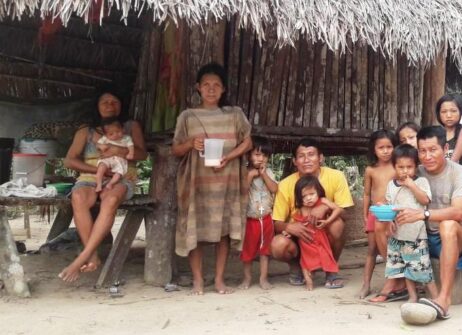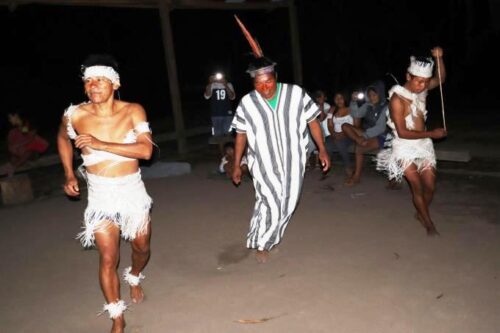Peru. The Asheninka Minga.
The Asheninka, are an indigenous ethnic group that lives in the centre of the forest in the district of Ucayali in the province of Atalaya in the northern part of Peru. Minga: not only communal work but also small informal tasks for the family.
The term minga comes from the Quechua culture mink’a meaning ‘asking for help by promising something’. Mink’a is a type of traditional communal work (chuqu), in the Andean communities, for purposes of social utility and community infrastructure projects. Participants are traditionally paid in kind. Mink’a is still practiced in indigenous communities also for minor jobs to be carried out in a family: relatives and acquaintances gather for mutually accomplishing a task.
Once a family has decided to ask the help of relatives, acquaintances, or neighbours, to carry out a small job for the family, they start to prepare food and drinks for the people who will arrive to work for them. Seven days before the gathering, the men of the family go to fish in the river or to mitayar (hunt) in the mountains, meanwhile the women prepare masato (fermented yucca drink). Once everything is ready, the householder asks relatives, acquaintances, and neighbours for their help about one day before the job needs to be done.

On the day of the minga, the mingueros: men, women, young people and even elder children begin to arrive at around 6:30 in the morning bringing with them machetes, axes and other tools to carry out the work. For his part, the householder welcomes them offering masato, coca and cigarettes. At 7:00 AM, they all start to work. The men and older youth do the heaviest work such as cutting down trees, while women and children do lighter works such as cutting bushes or rooting out weeds. The householder supervises the work of the mingueros; he collaborates with them and offers them masato. His wife and other people stay at home preparing the midday meal.
After six hours of hard work, which is done in a relaxed and merry atmosphere, the householder offers the mingueros a lunch, which could consist of a succulent Creole chicken broth, or a roast of bush meat accompanied by masato. While everybody is enjoying the delicious food and the masato, the householder takes advantage of the lunch break to thank all those that have arrived for helping, and at the same time, he reaffirms that he is always willing to help anybody who might need his collaboration, and encourages his guests to take advantage of the moment to announce another minga event.

After lunch, a recreational activity is organized for young people, a soccer competition, or a chengarito or a penalito.
While some play games, others dance to the rhythm of the local music, and still others drink masato, the typical drink of the Amazon. The entertainment lasts until 6:00 PM.
Minga is an example of the fraternal work in the Asheninka culture. The people who gather to help a neighbour or a relative do it in an atmosphere of fraternity, and then at the end of the work, they celebrate life and friendship all together. A minga event is also an occasion to meet other people, exchange experiences and strengthen relationships in a constructive way. (123RF.com)
Jhonny Mancilla Pérez



